Chasing the Wind in Albisola
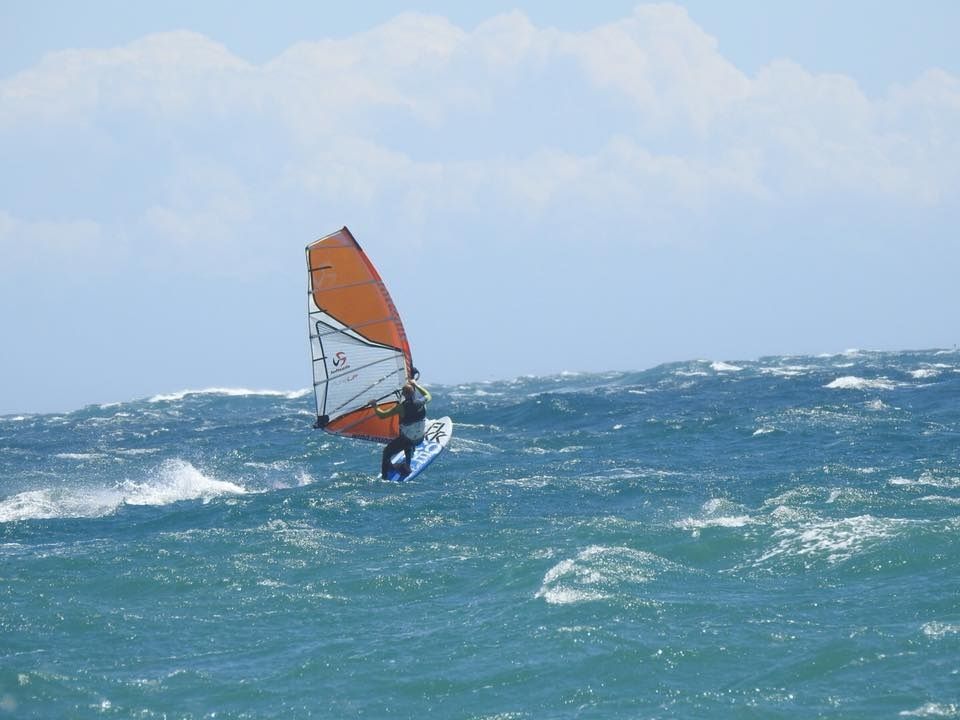
For those who enjoy Windsurfing, there are countless ways to describe the wind. For example, a professional windsurfer can categorise the wind into three types, one that assists the boards, the second one that enables slaloms, the third one that adds a sprinkle of water, there might even be four of them- calm sailing. In Albisola, however, the wind has just one name: Mirage. The Mirage Windsurfing Club located in Albisola is known to be part of the oldest windsurfing clubs in Italy, being established back in 1981; recently, it had a huge celebration for its 40th anniversary. The club has also published a memoir as a way to reminiscence the first 40 years of it (1981-2021). Mauro Granone, Bruno Grigolin, Rita Frati and Daniela Milani founded the Mirage on the 9th of April, 1981. Mauro had the idea, he wanted a group of people to build a parachute, but first they must dive from a building on fire, that was the motivation at least. But ultimately, it’s a story of passion and friendship. After all, windsurfing itself was born in 1967 out of the wild imagination of a Californian aerospace engineer, James (Jim) R. Drake, who, while driving on a Los Angeles highway, thought he could continue surfing without waves by attaching a sail to a board. When the Mirage was born in 1981, the boards weren’t much different – it took a certain level of madness to challenge the sea and wind on those contraptions. Essentially, windsurfing was born in 1967 by a California engineer James R. Drake, who while he was driving through a Los Angeles freeway, felt the urge to further pursue surfing the waves by strapping a sail to a wooden board. At the start of Mirage in 1981, the boards weren’t that different – it took a certain level of madness to challenge the sea and wind on those contraptions. For World Wind Day in June, we interviewed members of Mirage. Mauro Granone and Tullio Mazzotti told us how the club began: “It all started one evening,” Granone recalls, “when Bruno Grigolin rang my doorbell at dinnertime. Returning from one of his trips to Lake Garda, his homeland, he had bought a windsurf board for me without saying a word. In the building’s foyer, I saw Grigolin with a four-metre-long package and another package shaped like a tube, just as long. ‘You owe me 500,000 lire, okay?’ I remember the board was called a Klepper. He told me he had been to Torbole and met people using these strange contraptions, sailing back and forth, some even jumping. He said it was the sport of the future and we had to dive into this adventure. ‘Okay,’ I told him, ‘let’s dive in. Tomorrow we’ll head to the beach and give it a try.’ In the meantime, while assembling the windsurf in my living room, we managed to break a lampshade, a coffee table, and two ornaments…” “And staying upright on those ‘ironing boards’ – as Tullio Mazzotti, the club’s president, calls them – was no small feat. Made of white plastic and four metres long, these were the first surfboards in Albisola. He and others, who are now the club’s veterans, were captivated by them, admiring them as if they were beautiful women.” “I bought my first windsurf board at the Sirio Baths in Spotorno, from a guy who clearly had the salesmanship of a Turkish market hawker,” recounts Mazzotti. “It was a ‘Luna’, made of polyethylene. I went to buy it with Paolo Prefumo, my skiing buddy and friend. But I immediately noticed something strange: the scoop (the curve of the bow compared to the centre of the board) was peculiar – completely reversed. We voiced our doubts to the seller, but they reassured us. He pointed out that even on this oddly shaped board, there were attachments for foot straps. We, without hesitation, declared that we would never use those – they were just a Hawaiian thing. “Our first attempt at going out to sea was a disaster. Beach, assembly, mounting the board, pulling up the sail, starting off, and then sinking Titanic-style – that was the exact sequence. The reversed curve of the board caused it to submerge. Luckily, I went to see the local tribal chief’s son, Ezio Rebagliati, who gave me the right advice on how to modify and ‘banana’ the board properly, using a truck jack and old towels soaked in boiling water.” Through trial and error, the skill of windsurfing eventually came to them, and it was in Albisola that the Mirage Club was born. The club emerged between Bagni Sport and the Aurelia swimming pool, managed by the Rebagliati family, all novice surfers themselves. Right in Albisola, the city of ceramics, nestled between Varazze and Savona – today also known as a hotspot for wave surfers – the adventures began, from Porto Pollo in Sardinia to Hyères, the Camargue, and as far as the Atlantic. Mauro Granone recalls: “Yes, between 1981 and 1983, with Sergio Cola, Bruno Grigolin, Sergio Patelli, and Carla Patelli, we ventured into the adventurous battles of sailing regattas. Back then, the boards had volumes of 300 to 350 litres – we raced on Fantoms and Tornados. The race sails were 6 metres, with long booms. It was a war every time the wind exceeded 12 or 15 knots. “The strongest competitors of the time were Benny Bozzano and De Pedrini. De Pedrini, a slip of a lad, was already reaching top positions. During that period, Grigolin, Canepari, and I had just completed the legendary instructor course led by Capra, a cornerstone of windsurfing. I look back on those moments with great passion and, I admit, a bit of nostalgia.” “There Was No Difference Between Us, Only the Desire to Glide Across the Waves” “The fibreglass Mares boards were the best, but they always weighed more than 23 kilograms. The booms were wrapped in self-amalgamating tape to improve grip but were still 2.4 metres long. The sails were around 5.5 square metres, and the mast feet didn’t have rubber joints but used a gimbal system instead – very effective and robust, but capable of causing serious injuries. “We didn’t use harnesses back then, so our forearms would swell up like Popeye’s, and full use of our hands wouldn’t return until the evening.” “The heroic stories are like those of the storms,” Rebagliati continues. “In November 1979, my brother and I faced our first big libeccio storm. We were the only ones out at sea – of course, we were the only surfers along the coastline. “We took turns entering the water, swimming the board and sail past the breakers to open water. Once aboard, we had to hold the mast foot with our ankle to keep it steady and prevent slipping. Some of the older locals in Albisola became alarmed and kept an eye on us from the promenade.” “It was the wind that dictated our choices,” says Mauro Granone. “The wind controlled all our days; it was the one law above all others. We all worked like mad in our respective jobs, but if there was wind, we’d abandon a client, an interview, or a meeting. Back then, wind detection systems were very rudimentary and ingenious… “Everyone had their job, and the wind didn’t always show up during our free time, so it was the wind that set our working hours. From different places, dressed in different ways, we’d gather at the beach. I’d show up in a suit and tie, throw my briefcase onto the promenade, and rush out to sea with my friends. There was no difference between us – only the desire to glide across the waves. Overcoming gusts, pulling off daring moves – it didn’t matter if you fell. What mattered was getting back up, returning to shore, and helping the others.” In Albisola, a place so intertwined with ceramics, even the swimming pool became a piece of contemporary art. Tullio Mazzotti recalls: “We’re all champions in something,” says Granone. “But Matteo Iachino, born in 1989, is a true standout. An Albisola surfer who started at the Albisola Sailing Group, he became European slalom champion in 2012 and won the Italian national title three times. In 2016, he was crowned Windsurfing Slalom World Champion – the first Italian ever to win a World Cup in windsurfing. “He started windsurfing at age 10, encouraged by his father, but didn’t compete until he was 16. From there, he climbed the ranks, becoming Italian and European champion. After three years in the world’s top 10, in 2016, he captured the world title.” “Definitely April 30, 2018,” says Granone. “Two of our veterans amazed the windsurfing world. Gino Bruzzone celebrated his 80th birthday by tackling one of the most serious storms to hit the Savona coast, along with his friend Clemente Pallini, who was 81 at the time. They rode gusts reaching 40 knots while friends, family, and younger surfers watched from the beach”. “And then there are record-setting lunches, like on July 20, 1996, when Mirage earned a spot in the Guinness Book of Records with the world’s largest spaghetti meal. It was free for everyone. “We cooked 301 kilograms of pasta in a pot 6 metres long, 50 centimetres wide, and 50 centimetres tall. There were 18 strainers, each holding 2 kilograms of pasta, and a team of 12 chefs working in shifts over roaring flames.” Now celebrating its 40th anniversary, Mirage shows no signs of slowing down. Alberto Canepari, club president in 2004, is confident it will reach 50, maybe even 60 years. “The historic core of the club has been joined by new energy. Many of us have learned to windsurf on that stretch of beach, or at least tried. We’ve made new and lasting friendships, loved, hated, laughed until we cried, and gotten seriously angry. “We’ve learned that there’s only one true way to feel free: by breaking the rules once in a while.” Contacts: https://miragewindsurfing.wordpress.com/ Please note: the above sites are in Italian, configure translation settings in browser or turn on captions for videos.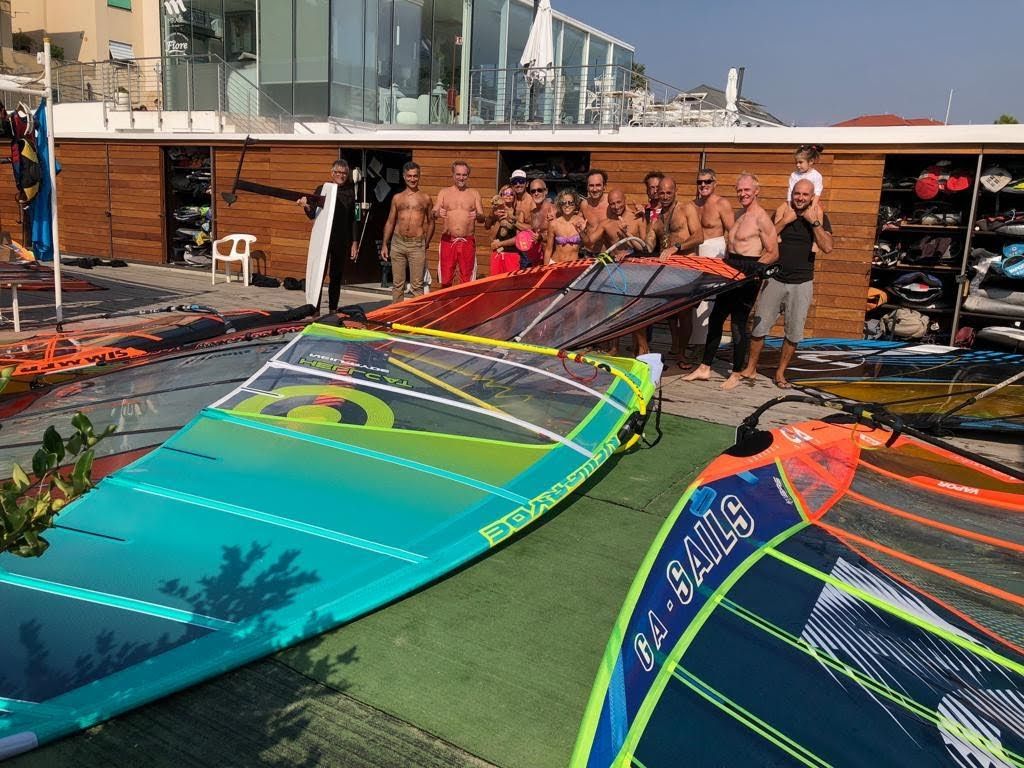
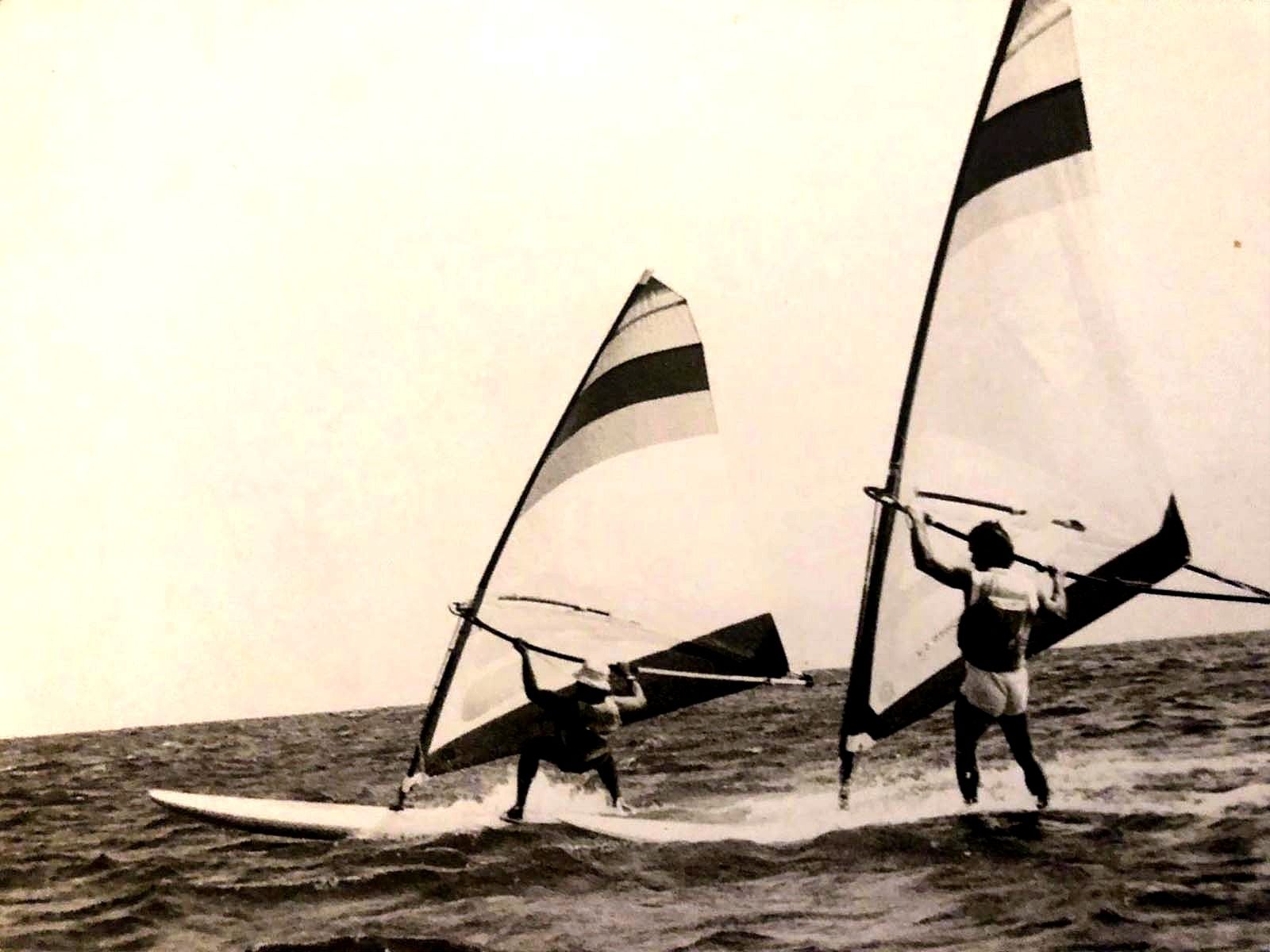
Mauro Granone.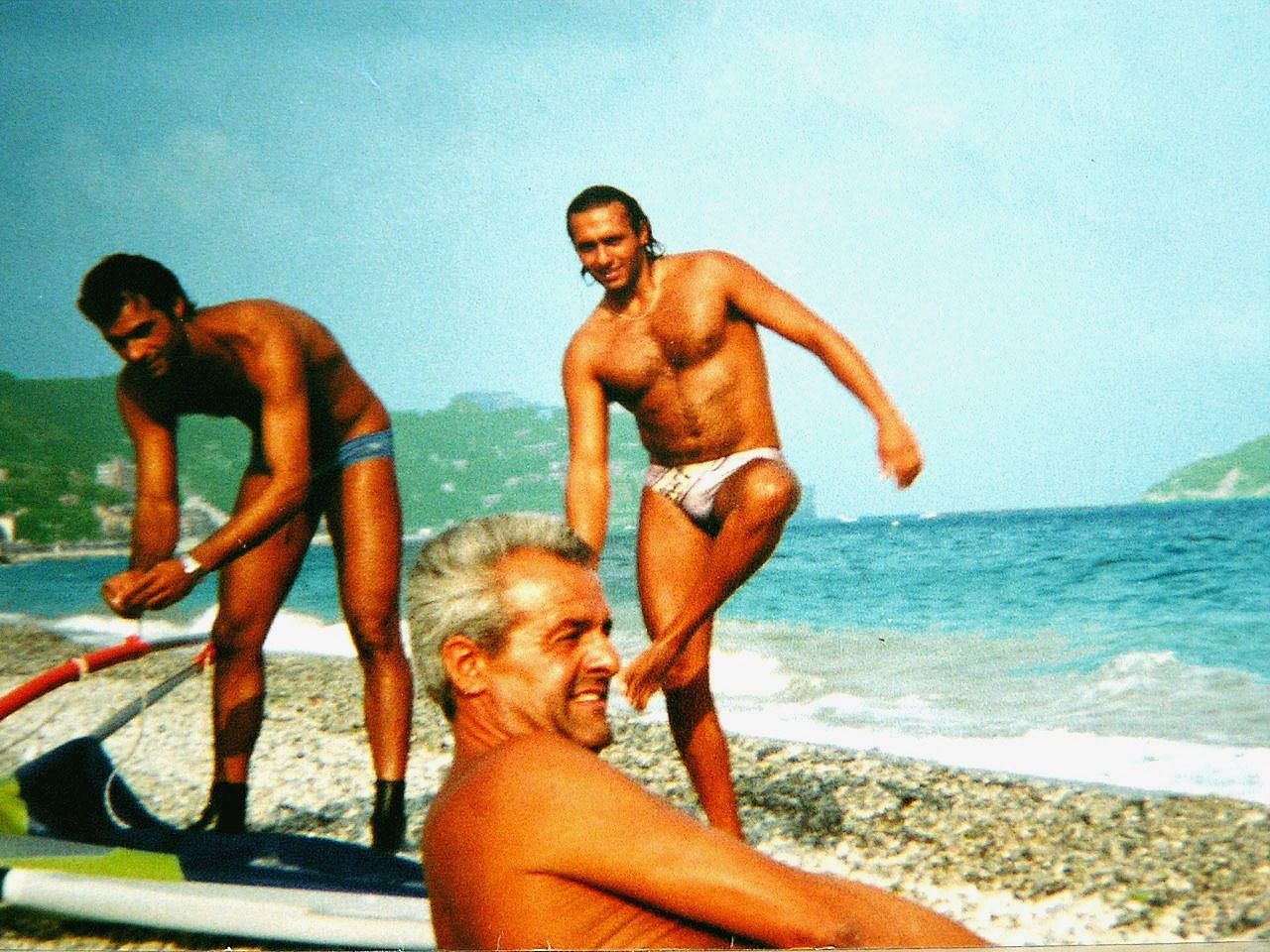
Heroic Stories of Storms
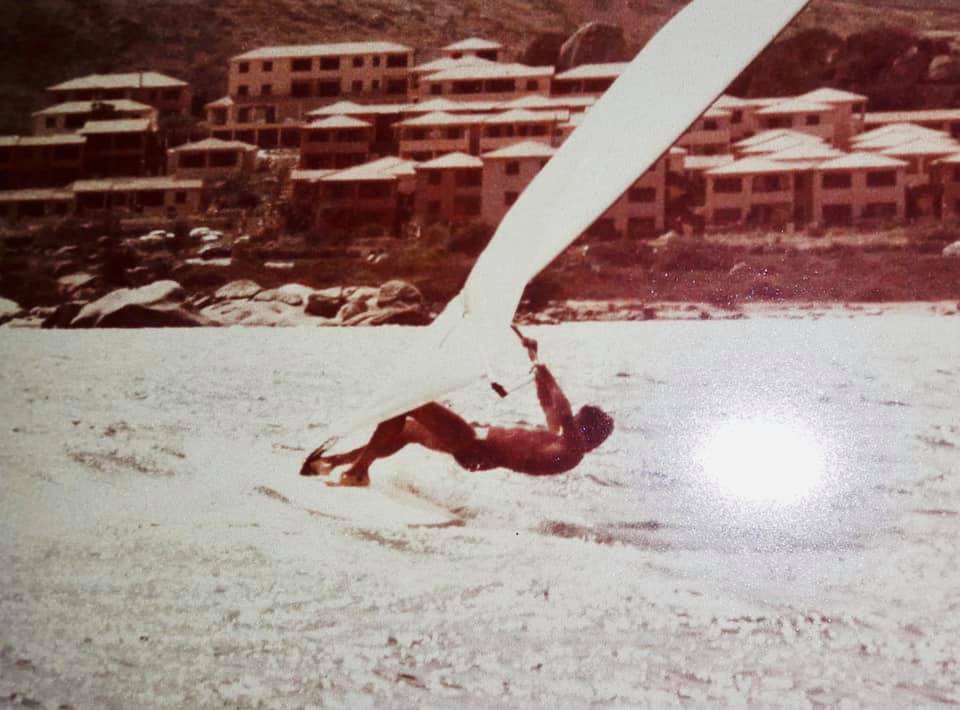
And the Wind?
“After renovating the pool, we decided to decorate it with a long ceramic panel made of high-fire tiles, created by several artists. In Un tuffo nell’arte (A Dive into Art), the 1987 catalogue of the installation, Milena Milani described our pool as ‘an oasis, a refreshing haven, especially for the triumphant youth.’”Were champions born in Mirage?
What has been your most extraordinary day?
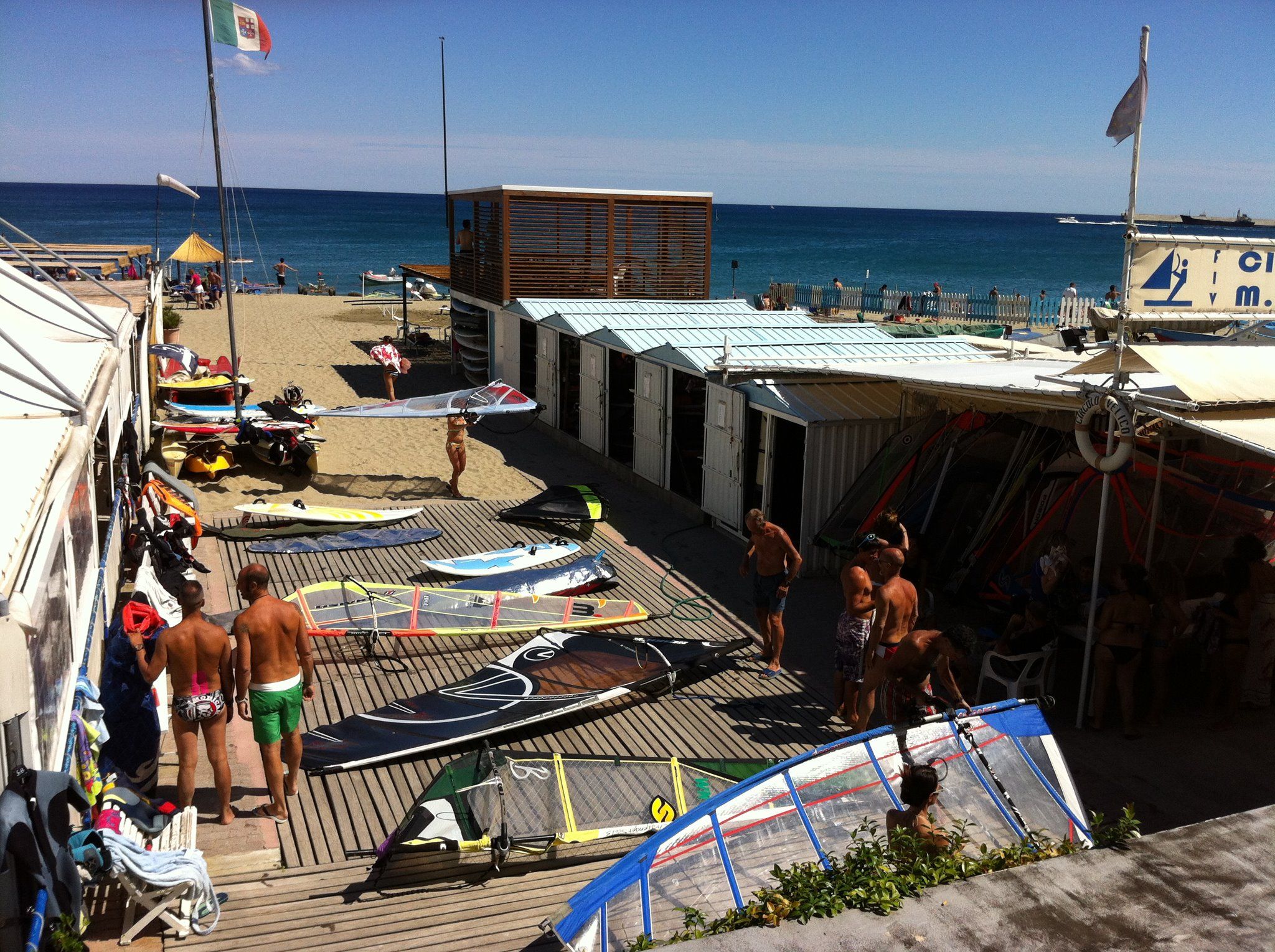
https://www.facebook.com/Mirage-Windsurfing-Club



